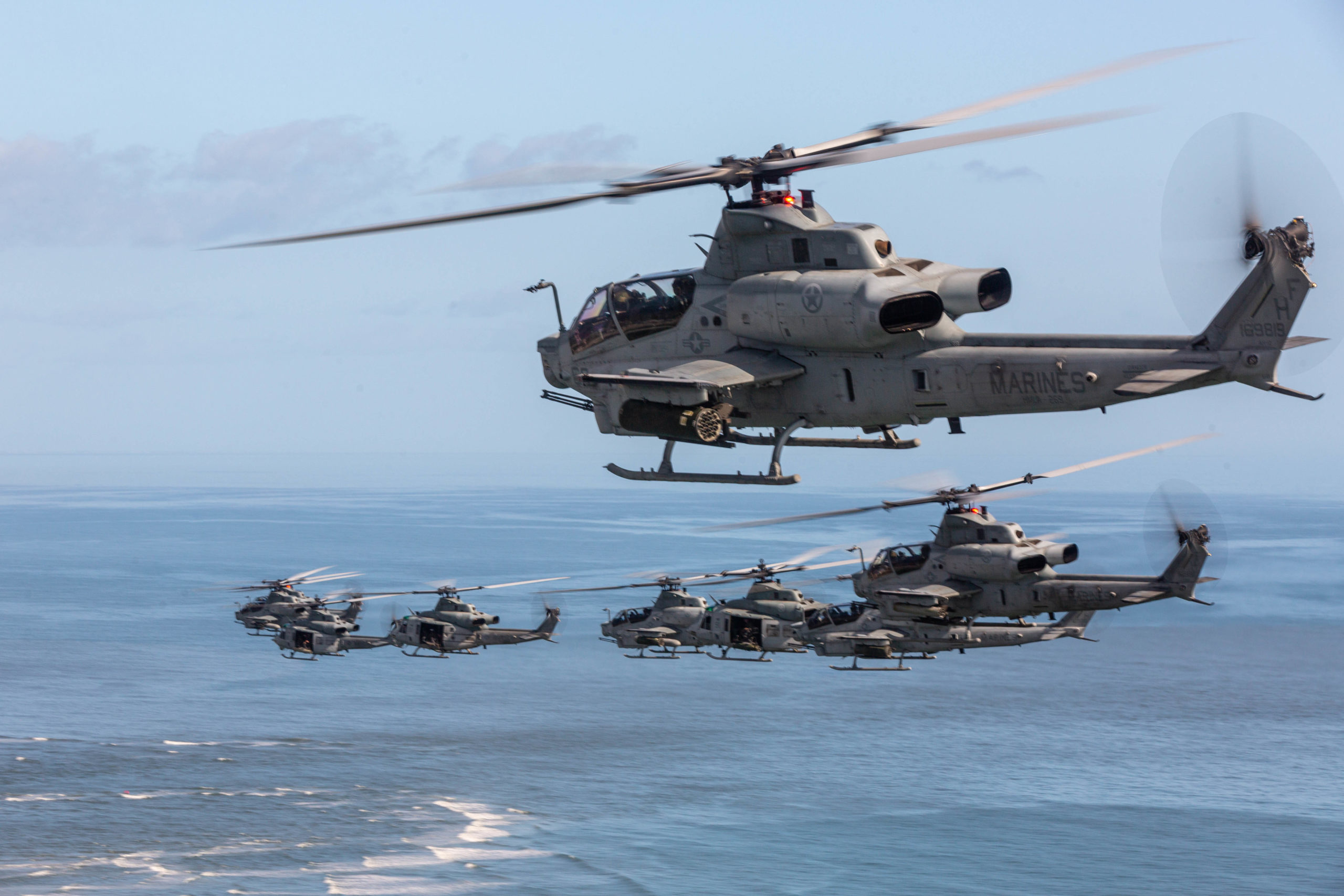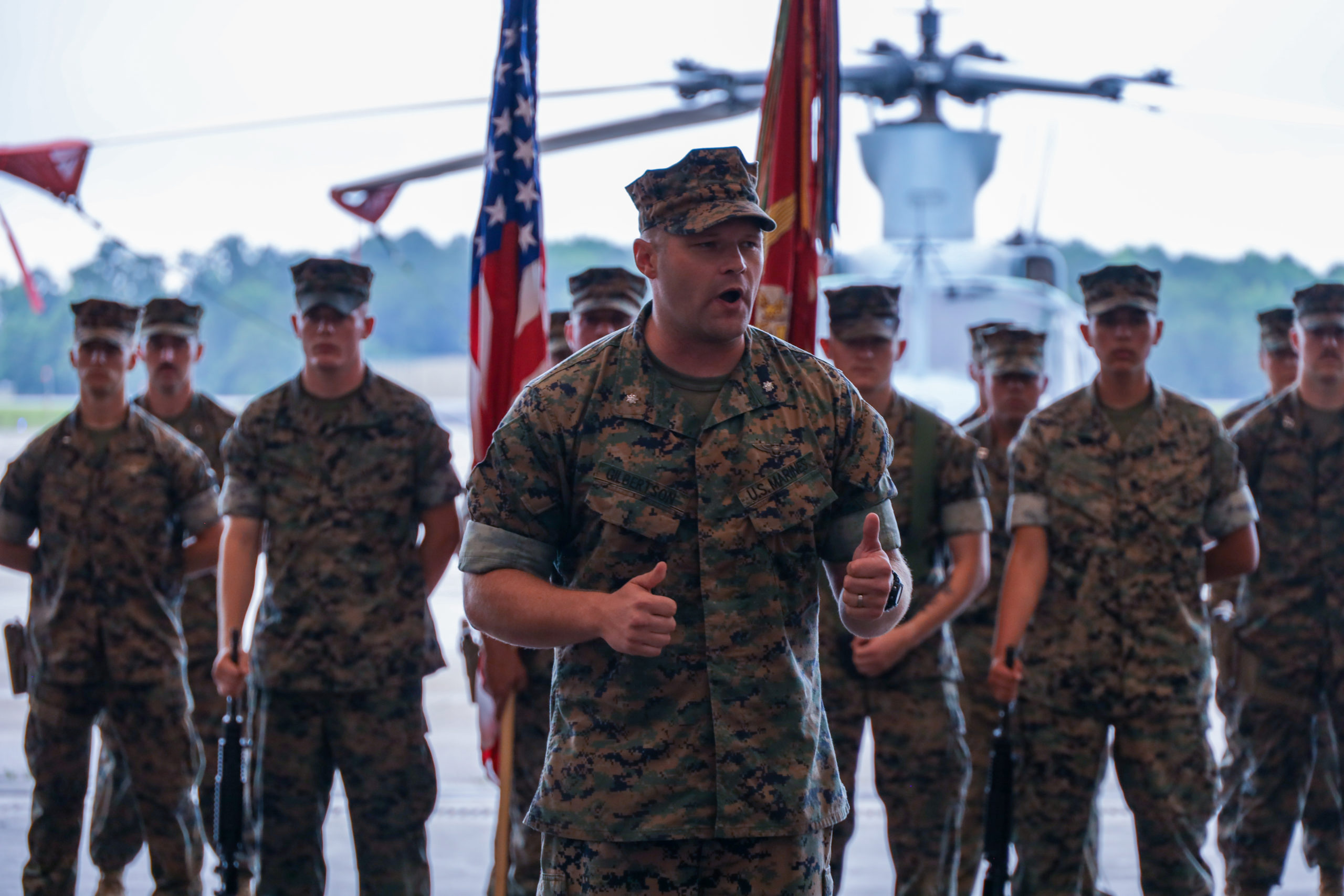The Strange Fate of HMLA-269: A Phoenix Squadron
On November 10, 2022, we learn that “Marine Corps Air Station New River, North Carolina, Nov. 7, 2022. This was the last flight for HMLA-269, which is deactivating in accordance with Force Design 2030. HMLA-269 is a subordinate unit of 2nd Marine Aircraft Wing, the aviation combat element of II Marine Expeditionary Force.”

When I visited the squadron in 2020, they were an essential part of 2nd MAW.
This is what I wrote:
Marine Light Attack Helicopter Squadron 269 (HMLA-269) is currently commanded by Lt. Col. Short and is a squadron consisting of the AH-1Z Viper attack helicopter and the UH-1Y Venom utility helicopter. They are known as the Gunrunners, and next door within the same hangar are the Warriors of Marine Light Attack Helicopter Squadron 167 (HMLA-167), commanded by Lt. Col. Hemming.
They are part of Marine Aircraft Group 29 within the 2nd Marine Aircraft Wing.
The “Gunrunners” operate what they refer to as “attack utility teams.”
What that means is that they operate the Viper (AH-1Z) and the Venom (UH-1Y) as an insertion and support package. They share 80% commonality of parts, operate from a small logistical footprint and are extremely maintainable in the field which make them a significant expeditionary warfare asset.
Recently, both squadrons retired their last AH-1W Super Cobra attack helicopter in favor of the AH-1Z Viper.
Lt. Col. Hemming noted in the interview, “The hydraulics, the engines, and some of the systems on the aircraft and the air frame, are significantly more durable and reliable than the old AH-1 Whiskey in terms of the amount of hours you can put on before you have to conduct maintenance on it. These significant upgrades result in your ability to operate the aircraft for an extended periods of time compared to the legacy Cobra and Huey.”
The Viper brings significant firepower to an expeditionary unit with the Venom providing lift and support to that unit as well.
The helicopters have evolved from their legacy ancestors to be more capable as well.
As Lt. Col. Short put it, “We are the most expeditionary and resilient attack helicopter platform there is in terms of the scale and the ability to survive in the field or operate forward.
“Our hydraulics, our control systems, our powertrain systems are the most expeditionary maintainable as an attack utility team in operation today.”
Lt. Col. Short added, “we are the, as somebody described it, ‘The punchy little friend in the overhead that’s there when no one else is.’”In the counter-insurgency environment, the attack utility team could operate in a distributed environment to support Marines fighting toe-to-toe against insurgents.
Lt. Col. Short argued that their attack utility team was very “risk worthy” in terms of the “logistical, the manpower, the cost investment for the capability gain, you would give a ground force, or you would give a supported force by putting them forward, putting them into a position to offer support.”
The Viper is adding Link-16 and full motion video so that it can be even more supportable for or supported by an integratable insertion force.
It is also very capable because of its relatively small footprint able to land in a variety of ground or ship settings and get refueled. If one focuses on the ability to operate virtually in any expeditionary setting, at sea or on land, the Viper is extremely capable of refuelability for an insertion force. They can do this onboard virtually any fleet asset at sea or at a Forward Air Refueling Point or FARP.
From a concept of operations perspective, notably with regard to an ability to operate from multiple bases, the attack utility package certainly can keep pace with the “pacing threats” facing the Marines.
The Commandant has asked the Marines to rethink how to do expeditionary operations, and to promote tactical innovations to do so.
HMLA-269 has been focused on this effort.
Notably, they have been exercising with the Ground Combat Element (GCE) at Camp Lejeune to work small packages of force able to be inserted into the combat space and able to operate in austere locations for a few days to get the desired combat effect and then move with the GCE to new locations rapidly.
HMLA-269 has been working closely with 3rd Battalion, 6th Marines to shape innovative ways to deploy expeditionary force packages.
“We are working ways to work distributed force operations with the battalion.” They have a security mission currently with regard to II MEF in reinforcing Norway. The question being worked is: how, in a multi-basing environment, can one provide the kind of firepower that the maneuver force would need?
The Gunrunners took a section of aircraft to work with a ground combat unit and to live together in the field for a period of time and sort out how best to operate as an integrated force package. They operated in the field without a prepared operating base and worked through the challenges of doing so. They worked with an unmanned aircraft ISR feed as part of the approach.
Obviously, this is a work in progress, but the strategic direction is clear.
And there are various ways to enhance the capability of the force to be masked as well. Movement of small force packages, operating for a limited period of time, moving and using various masking technologies can allow the attack utility team which is operational now to be a key player in shaping a way ahead for Marine Corps expeditionary operations.
In short, the attack/utility team of 2nd MAW are taking the force they have, and their significant operational experience and adapting to the new way ahead with the next phase of change for expeditionary warfare.
Well apparently they did not do enough to make the Force Design 2030 cut.
But then on July 1, 2024, they were re-activated.
The squadron has not changed: but the world has. The Russians apparently did learn that they were not a “pacing threat.”
They just know how to wage war.
And the Gunrunners are back and part of the learning curve for 2nd Marine Air Wing.
Like the Phoenix bird, the squadron is back.
In this story from 2nd MAW published on July 1, 2024, we learn:
Marine Light Attack Helicopter Squadron (HMLA) 269, 2nd Marine Aircraft Wing (MAW), reactivated during a ceremony aboard Marine Corps Air Station (MCAS) New River, North Carolina, July 1.
HMLA-269, known as “The Gunrunners,” previously deactivated on Dec. 9, 2022, in accordance with Force Design initiatives. Throughout the course of the squadron’s brief deactivation, the Marine Corps conducted analysis on force management in order to ensure that no operational commitments were left unfulfilled. This analysis identified the need for an additional HMLA squadron on the East Coast to provide sustained operational support to II Marine Expeditionary Force (MEF). This change within 2nd MAW represents incremental change to Force Design to meet the conditions described in recent national security and defense strategies.
The reactivation ceremony featured remarks from Col. David Fitzsimmons, commanding officer, Marine Aircraft Group 29, who thanked the various advocates at 2nd MAW, II MEF, and Headquarters, U.S. Marine Corps, that made HMLA-269’s reactivation possible.
“It was a decidedly somber day when HMLA-269 deactivated,” said Fitzsimmons. “That was certainly reversed today.”
Also present was Lt. Col. Jens Gilbertson, commanding officer, HMLA-269, who highlighted Marine Attack Helicopter Squadron (HMA) 269’s legacy as the Marine Corps’ first attack helicopter squadron and recounted the multiple pilots and aircrew within HMA and HMLA-269’s history who received the Distinguished Flying Cross. He noted that HMA and HMLA-269 was recognized eight times by the Marine Corps Aviation Association as the Marine Corps’ Light Attack Helicopter Squadron of the Year, more so than any other Marine Corps light attack helicopter squadron in history. Gilbertson also recognized the Marines of HMLA-269 who enabled the squadron’s reactivation.
“Ultimately, it was up to these Marines to get it done,” said Gilbertson. “They have discipline, and they have precision, and that’s the same discipline and precision they’re going to bring when they maintain and fly our aircraft.”
The squadron will resume operating the AH-1Z “Viper” attack helicopter and the UH-1Y “Venom” utility helicopter. Both aircraft are manned, trained, and equipped to fight from the sea into austere environments and confined littoral spaces, and support the Marine Air-Ground Task Force by providing offensive air support, utility support, armed escort, and airborne supporting arms coordination.
Most interesting is the indirect knowledge of the redesign of force design 2030. I am certainly pleased to learn that somebody figured out that there was a need to meet “the conditions described in recent national security and defense strategies.”
For the simple strategist, I would simply say that in a world of multi-polar authoritarian states and movements, the pacing threat is more than China. And 2nd MAW along with the rest of us need to see how to evolve manned systems in the emerging world of autonomous threat systems, and I am glad 2nd MAW has its attack squadron back and they can be a key part of shaping this real world learning curve.
Featured photo: U.S. Marine Corps Lt. Col. Jens Gilbertson, from Pennsylvania and commanding officer of Marine Light Attack Helicopter Squadron (HMLA) 269, addresses the audience during the reactivation ceremony of HMLA-269 at Marine Corps Air Station New River, North Carolina, July 1, 2024. The reactivation of HMLA-269 provides 2nd Marine Aircraft Wing and II Marine Expeditionary Force with additional offensive air support, utility support, armed escort, and airborne supporting arms capability. (U.S. Marine Corps photo by Staff Sgt. Theodore Bergan)

